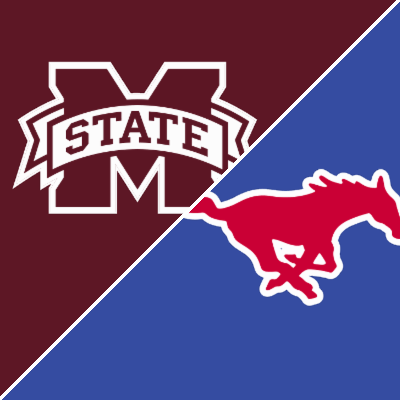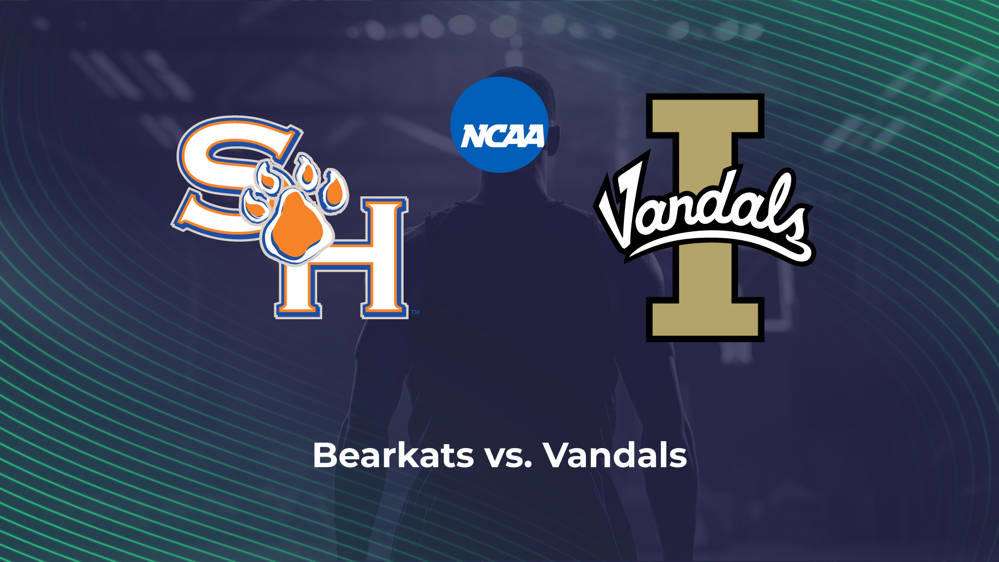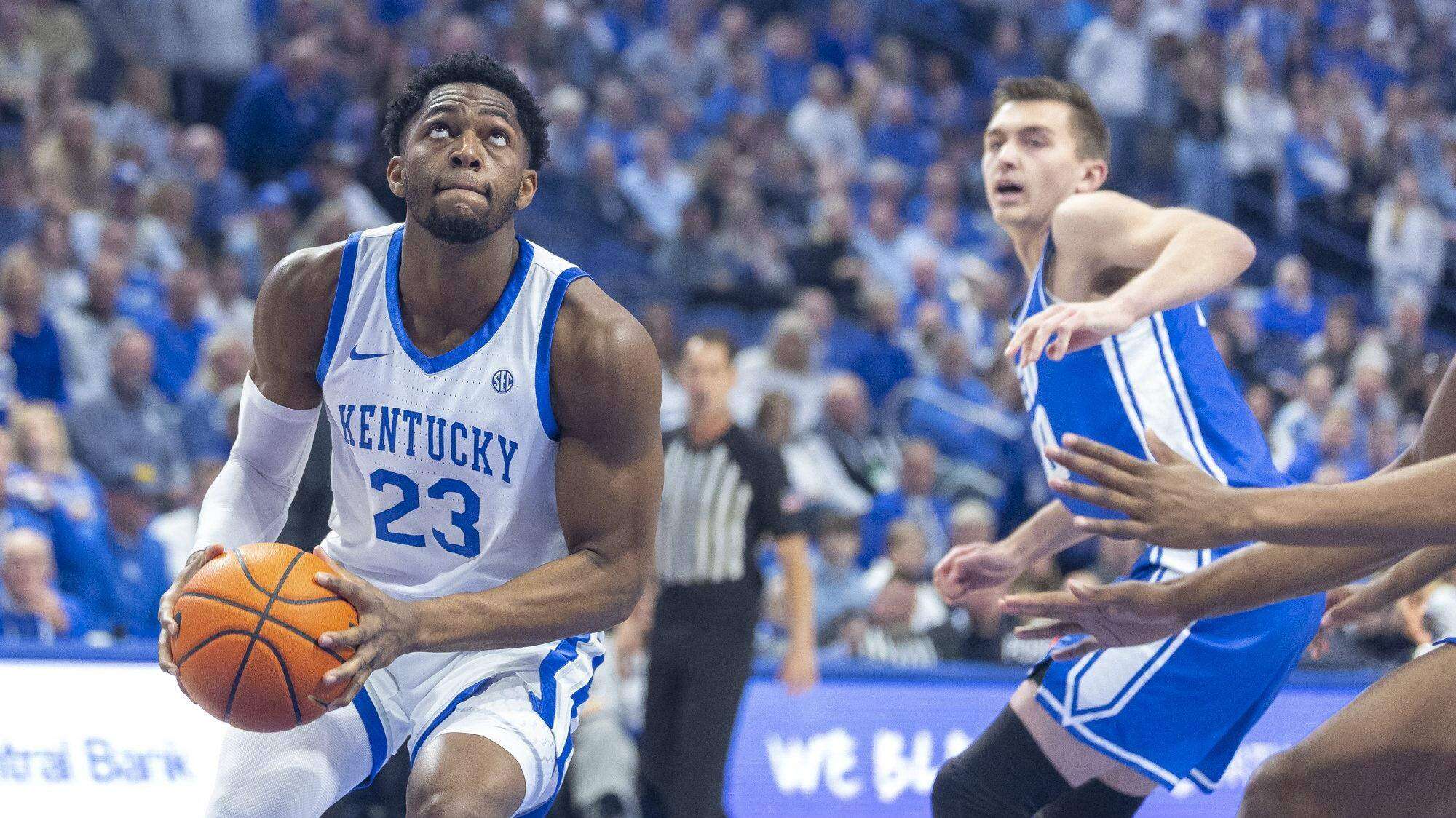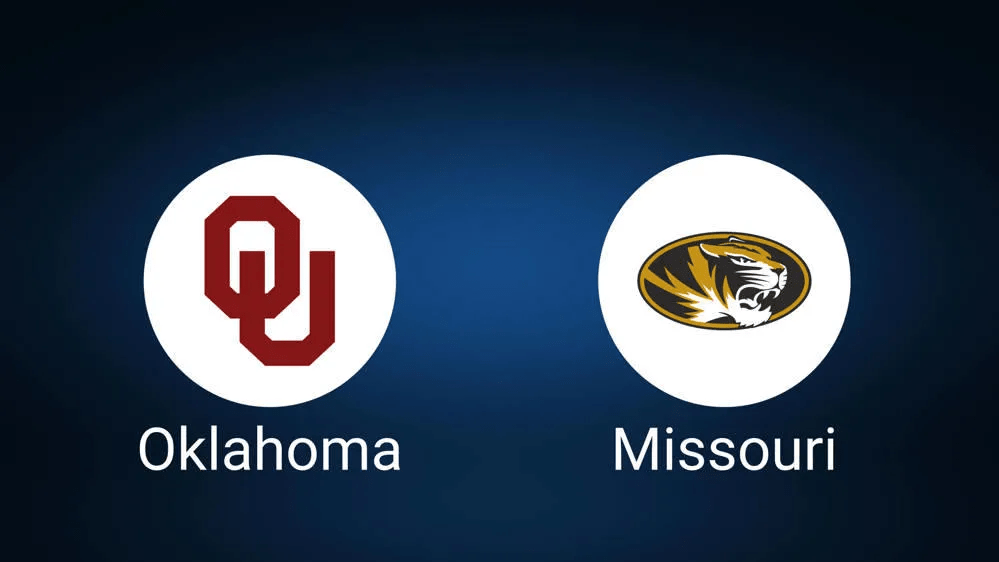Jackson State Tigers vs. Louisiana Ragin’ Cajuns Advanced Game Analysis
Jackson State Tigers vs Louisiana Ragin’ Cajuns Advanced Game Analysis – NCAA Basketball Nov.28, 2025 at 8:00pm ET Matchup

Jackson State Tigers vs Louisiana Ragin’ Cajuns Advanced Game Analysis – NCAA Basketball Nov.28, 2025 at 8:00pm ET
Matchup Preview Table
| Team | Record | Points / Game | Opp Points / Game | Avg Score Margin | Eff FG% | 3P% | FT% | Assists / Game | Assists / Turnover | Total Rebounds / Game | Turnovers / Game |
|---|---|---|---|---|---|---|---|---|---|---|---|
| Jackson State Tigers | 0-6 | 60.8 (#349) | 99.0 (#364) | -38.2 (#365) | 42.9% (#344) | 31.1% (#246) | 69.4% (#235) | 9.3 (#350) | 0.609 (#357) | 28.3 (#353) | 15.3 (#322) |
| Louisiana Ragin’ Cajuns | 1-6 | 58.7 (#358) | 75.9 (#187) | -17.1 (#336) | 44.1% (#327) | 28.6% (#300) | 68.6% (#252) | 7.3 (#363) | 0.537 (#362) | 30.7 (#320) | 13.6 (#244) |
Quick Glance Summary Card
Game Snapshot =========================================== Form and Margin - Jackson State: 0-6, 60.8 PPG (#349), -38.2 margin (#365) - Louisiana: 1-6, 58.7 PPG (#358), -17.1 margin (#336) Offensive Level JKST ██░░░░░░░░░░ 60.8 PPG (#349), 42.9% eFG (#344) Louisiana ██░░░░░░░░░░ 58.7 PPG (#358), 44.1% eFG (#327) Defensive Scoring JKST ░░░░░░░░░░░░ 99.0 Opp PPG (#364) Louisiana ████░░░░░░░░ 75.9 Opp PPG (#187) Rebounding JKST █░░░░░░░░░░░ 28.3 RPG (#353) Louisiana ███░░░░░░░░░ 30.7 RPG (#320) Ball Movement and Turnovers JKST 9.3 AST (#350), 0.609 A/T (#357), 15.3 TO (#322) Louisiana 7.3 AST (#363), 0.537 A/T (#362), 13.6 TO (#244) Headline: This is a struggle matchup between two offenses near the bottom of Division I, but Louisiana separates itself with far better defensive numbers and a less severe efficiency gap on both ends than Jackson State.
Team Identity Profiles
Jackson State Tigers Team Profile
Jackson State enters at 0-6 with one of the most challenging statistical resumes in the country. The Tigers score 60.8 points per game (#349) while allowing 99.0 points per game (#364), which produces a staggering average scoring margin of minus 38.2 (#365). That margin reflects issues on every line of the box score. Offensively, they post 42.9 percent effective field goal percentage (#344) and 35.9 percent overall shooting (#356), supported by a shooting efficiency index of 0.922 (#354). The Tigers simply have not found reliable scoring in the half court or in transition.
Ball movement and creation are also in a difficult place. Jackson State averages 9.3 assists per game (#350) and a 0.438 assists per field goal made ratio (#326). Their assist to turnover ratio stands at 0.609 (#357), dragged down by 15.3 turnovers per game (#322). Nearly one out of every five offensive plays ends in a turnover, with an 18.9 percent turnovers per play rate (#323). That level of offensive friction means that even modest shooting improvements would be partially neutralized by lost possessions.
The shot profile offers a few modest positives. Jackson State hits 31.1 percent from three (#246) on 26.8 attempts (#84), making 8.3 threes per game (#134). Three point volume and accuracy are not disastrous but are overwhelmed by issues inside the arc, where the Tigers shoot just 39.8 percent on twos (#359). Free throw generation is limited at a 0.238 free throw attempt rate (#349), with 14.2 attempts per game (#352) and 9.8 makes (#350) at 69.4 percent (#235). The result is a perimeter leaning offense that struggles to get to the rim and convert at the stripe.
Defensively, the numbers are even more stark. Opponents score 99.0 points per game (#364), shoot 53.3 percent from the field (#362) and 61.5 percent effective field goal percentage (#362). Opponents hit 38.6 percent from three (#322) and a devastating 64.2 percent on twos (#357). The Tigers do not meaningfully contest either level. Opponent shooting efficiency, at 1.272 (#361), reflects an environment where nearly every trip creates a high value look.
On the glass, Jackson State faces one of the steepest deficits in the nation. They collect 28.3 rebounds per game (#353) while surrendering 45.2 to opponents (#363). That includes just 7.0 offensive boards (#321) and 17.7 defensive rebounds (#355). Their offensive rebounding rate is 19.0 percent (#355), while their defensive rebounding rate is 57.3 percent (#363). Opponents grab 13.2 offensive rebounds per game (#355) and 29.8 defensive boards (#363). In simple terms, Jackson State loses the rebounding battle by a huge margin almost every night, yielding both extra possessions and second chance scoring.
Defensively, the Tigers create limited disruption. They average 6.7 steals per game (#195) with a 7.6 percent steals per play rate (#240). Opponents, on the other hand, register 10.0 steals per game (#353) and 12.3 percent steals per play (#352) while forcing only 9.7 turnovers per game (#334) and 11.0 percent opponent turnovers per play (#355). That trade off means Jackson State commits far more turnovers than they generate, while also experiencing heavy on ball pressure on their own possessions.
Foul metrics show a team that does not gain much from physicality. Jackson State commits 19.0 personal fouls per game (#206) at 21.7 percent fouls per play (#132), while opponents commit only 14.8 fouls per game (#347). That gap results in fewer free throws for the Tigers relative to their opponents, despite the Tigers already trailing heavily in pure shooting efficiency.
Louisiana Ragin’ Cajuns Team Profile
Louisiana enters at 1-6 with its own set of issues, but the statistical picture is less severe than Jackson State’s. The Ragin’ Cajuns score 58.7 points per game (#358) and allow 75.9 points per game (#187) for a minus 17.1 average margin (#336). Offensively, they sit at 44.1 percent effective field goal percentage (#327) and 38.8 percent overall shooting (#325), with a shooting efficiency of 0.961 (#333). Those numbers are below average, but they are not at the extreme bottom in the same way as Jackson State.
Creation and ball security are problematic. Louisiana averages 7.3 assists per game (#363), the low end of Division I, with a 0.352 assists per field goal made ratio (#359) and 0.537 assist to turnover ratio (#362). They commit 13.6 turnovers per game (#244) at 18.2 percent turnovers per play (#304). This is an offense that struggles to generate easy looks and often has to rely on individual shot making in late clock scenarios.
The shot profile shows modest three point usage. Louisiana hits 28.6 percent from three (#300) on 20.0 attempts per game (#288), making 5.7 threes (#316). Those rates are low in volume and efficiency. Inside the arc, they shoot 44.9 percent on twos (#323). At the line, they post a 0.316 free throw attempt rate (#267) with 16.9 attempts per game (#316) and 11.6 makes (#313) at 68.6 percent (#252). The result is a low scoring offense that lacks a strong identity in either three point volume or rim pressure.
Defensively, Louisiana is clearly ahead of Jackson State, even if the numbers are not elite. Opponents score 75.9 points per game (#187) on 53.8 percent effective field goal percentage (#257) and 46.6 percent overall shooting (#242). Opponent three point percentage sits at 33.6 percent (#197), and two point percentage at 56.4 percent (#285). Those are below average figures, but they are significantly better than what Jackson State has allowed. The main issue is fouling. Opponents carry a 0.596 free throw attempt rate (#363), with 30.1 free throw attempts per game (#352) and 21.4 makes (#344). Louisiana puts teams on the line frequently and pays for it.
On the glass, Louisiana is not dominant, but they are more stable than Jackson State. The Ragin’ Cajuns average 30.7 rebounds per game (#320), with 7.3 offensive boards (#309) and 19.6 defensive rebounds (#311). Their offensive rebounding rate is 23.6 percent (#299), and their defensive rebounding rate is 71.0 percent (#189). Opponents grab 35.4 boards per game (#168), with 8.0 offensive rebounds (#84) and 23.6 defensive rebounds (#218). The rebounding deficit is present but manageable compared to the extreme gap that Jackson State faces.
Louisiana also lacks disruptive defensive volume. They record 4.7 steals per game (#334) with a 6.3 percent steals per play rate (#316), forcing 10.1 opponent turnovers per game (#313) and 13.5 percent opponent turnovers per play (#270). That is a low takeaway profile. Their foul profile is very high, with 24.4 personal fouls per game (#364) and 32.4 percent fouls per play (#365). Opponents do not need to shoot lights out to score, because the free throw line is open throughout the game.
Team Identity Snapshot Lists
Jackson State Identity Snapshot
- 0-6 record with 60.8 PPG (#349) and 99.0 opponent PPG (#364), minus 38.2 margin (#365)
- Low efficiency at 42.9% eFG (#344), 35.9% FG (#356) and 0.922 shooting efficiency (#354)
- Moderate three point volume at 26.8 attempts (#84), 8.3 makes (#134) on 31.1% (#246)
- Limited free throw presence, 14.2 FTA (#352), 9.8 FTM (#350) at 69.4% (#235)
- Severe rebounding deficit, 28.3 RPG (#353) vs 45.2 opponent RPG (#363)
- High turnover rate, 15.3 TOs (#322) and 18.9% TO per play (#323), with low opponent turnovers forced
- Defensive struggles at all levels, opponents at 61.5% eFG (#362) and 64.2% on twos (#357)
Louisiana Identity Snapshot
- 1-6 record with 58.7 PPG (#358) and 75.9 opponent PPG (#187), minus 17.1 margin (#336)
- Below average offense, 44.1% eFG (#327), 38.8% FG (#325) and 0.961 shooting efficiency (#333)
- Modest three point output, 28.6% from three (#300) on 20.0 attempts (#288), 5.7 makes (#316)
- Free throws at 16.9 FTA (#316), 11.6 FTM (#313) with 68.6% FT (#252)
- Rebounding slightly below average but not catastrophic, 30.7 RPG (#320) vs 35.4 opponent RPG (#168)
- Very low assist volume with 7.3 AST (#363) and 0.537 A/T (#362)
- Defense that is harmed by fouling, 0.596 opponent FTA/FGA (#363) and 21.4 opponent FTM (#344)
High Level Team Comparison
At a high level, this matchup features two teams that have struggled significantly, but to very different degrees. Jackson State’s profile is one of the most extreme negative ones in Division I, with heavy deficits in offense, defense and rebounding. Louisiana has its own offensive issues, but its defense is closer to average and retains a more manageable scoring margin. The Ragin’ Cajuns have a negative profile, but not a bottom tier one across every category.
If both teams play to their current season averages, Louisiana has clear analytical edges in allowing fewer points, contesting shots more effectively, controlling the glass relatively better and sending opponents to the line more often but still less catastrophically than Jackson State suffers on the other side. Jackson State’s path to competitiveness requires its first real outlier performance in multiple categories at once: better interior defense, improved rebounding and a sharp reduction in turnovers.
From a predictive standpoint, the separation here is mainly about floors rather than ceilings. Louisiana has shown the ability to keep opponents under 80 points and keep margins under 20 in several scenarios. Jackson State’s baseline has them surrendering nearly 100 per game and losing by almost 40. Unless large corrections occur, Louisiana has the structural advantage, even while carrying its own flaws.
By The Numbers: Core Matchup Metrics
Scoring and Margin
Points Per Game Jackson St ██░░░░░░░░░░ 60.8 (#349) Louisiana ██░░░░░░░░░░ 58.7 (#358) Opponent Points Per Game Jackson St ░░░░░░░░░░░░ 99.0 (#364) Louisiana ████░░░░░░░░ 75.9 (#187) Average Scoring Margin Jackson St ░░░░░░░░░░░░ -38.2 (#365) Louisiana ███░░░░░░░░░ -17.1 (#336)
Scoring data immediately highlights the gap in competitiveness. Both offenses are among the lowest scoring groups nationally, but Jackson State’s defense has yielded nearly triple digit points per game, creating a margin that is more than double Louisiana’s negative mark. That indicates that even if neither team shoots the ball particularly well, Louisiana has operated in a far more competitive band of results.
Shooting Efficiency
Effective Field Goal Percentage Jackson St ██░░░░░░░░░░ 42.9% (#344) Louisiana ███░░░░░░░░░ 44.1% (#327) Three Point Percentage Jackson St ████░░░░░░░░ 31.1% (#246) Louisiana ███░░░░░░░░░ 28.6% (#300) Two Point Percentage Jackson St ░░░░░░░░░░░░ 39.8% (#359) Louisiana ██░░░░░░░░░░ 44.9% (#323) Shooting Efficiency Index Jackson St 0.922 (#354) Louisiana 0.961 (#333)
Neither team grades well as a shooting unit, but Louisiana is somewhat less inefficient. Jackson State’s 39.8 percent two point shooting is especially problematic, because it signals a near complete inability to finish at the rim or convert mid range opportunities at a competitive rate. Louisiana is still below average inside the arc but does not sit at the very bottom of the distribution. The net difference in shooting efficiency index is modest yet meaningful when combined with the defensive splits.
Rebounding
Total Rebounds Per Game Jackson St █░░░░░░░░░░░ 28.3 (#353) Louisiana ███░░░░░░░░░ 30.7 (#320) Rebounding Gap vs Opponents (Total) Jackson St 28.3 vs 45.2 (deficit of 16.9 boards) Louisiana 30.7 vs 35.4 (deficit of 4.7 boards) Offensive Rebounds and Rates Jackson St 7.0 ORB (#321), 19.0% ORB% (#355) Louisiana 7.3 ORB (#309), 23.6% ORB% (#299) Defensive Rebound Percentage Jackson St 57.3% DRB% (#363) Louisiana 71.0% DRB% (#189)
Rebounding numbers underline one of the key structural differences. Both teams lose the glass, but Jackson State loses it by a huge margin. Their 57.3 percent defensive rebound rate and 19.0 percent offensive rebound rate are near the bottom nationally, which explains why opponents can raise shot counts and second chance opportunities at will. Louisiana is below average, but they are not overwhelmed to the same extent. That matters in a game where every extra shot can swing a low scoring contest.
Ball Security and Pressure
Assists and Turnovers - Offense Jackson St 9.3 AST (#350) 15.3 TO (#322) 0.609 A/T (#357) Louisiana 7.3 AST (#363) 13.6 TO (#244) 0.537 A/T (#362) Turnovers Forced - Defense Jackson St 9.7 Opp TO (#334) 11.0% Opp TO/play (#355) 6.7 steals (#195) Louisiana 10.1 Opp TO (#313) 13.5% Opp TO/play (#270) 4.7 steals (#334)
Both teams struggle to generate assists and protect the ball. Jackson State is slightly better in assist volume, while Louisiana commits fewer turnovers per game. Neither defense is particularly disruptive. Jackson State forces fewer turnovers than Louisiana, despite opponents already playing from a position of offensive comfort. Louisiana’s takeaway numbers are low as well, so this matchup is unlikely to feature high level backcourt pressure. The team that can simply avoid self inflicted mistakes will gain an edge.
Fouls and Free Throws
Free Throw Rate (FTA per FGA) Jackson St 0.238 (#349), 14.2 FTA (#352), 9.8 FTM (#350) Louisiana 0.316 (#267), 16.9 FTA (#316), 11.6 FTM (#313) Free Throw Percentage Jackson St 69.4% (#235) Louisiana 68.6% (#252) Opponent Free Throw Profile Jackson St 0.395 Opp FTA/FGA (#235), 25.8 Opp FTA (#301), 18.7 Opp FTM (#305) Louisiana 0.596 Opp FTA/FGA (#363), 30.1 Opp FTA (#352), 21.4 Opp FTM (#344)
Free throw data reveals a different kind of imbalance. Offensively, both teams are below average in their ability to get to the stripe and capitalize. Defensively, Louisiana puts opponents on the line at one of the highest rates in the country, while Jackson State is also permissive but slightly less extreme. In this particular matchup, where neither team has proven elite at drawing free throws or converting them, the foul disparity may be less decisive than in other games, although Louisiana’s foul tendency still opens a window for Jackson State to manufacture easier points if they are aggressive.
Advanced Metrics and Tempo Analysis
Tempo for this game projects into a medium range. Jackson State attempts 59.5 field goals per game (#168), while opponents attempt 65.3 (#334). Louisiana attempts 53.4 shots per game (#336), with opponents at 50.6 (#7). That profile suggests that Jackson State games are frequently driven into higher possession totals by opponent pace and scoring, whereas Louisiana games trend slightly lower in shot volume. In a head to head environment, the likely compromise is a modestly paced game where shot quality rather than sheer possession count defines the outcome.
From an advanced efficiency standpoint, Jackson State’s 0.922 shooting efficiency versus Louisiana’s 0.961 shows that, per shot, the Ragin’ Cajuns hold a small edge. The more decisive gap appears on defensive efficiency, where Jackson State’s opponents post 1.272 shooting efficiency (#361) compared to 1.163 allowed by Louisiana (#290). While both teams are in the negative band, Louisiana’s defense has at least slowed opponents enough to give their offense a chance in some games. Jackson State’s defense has not had a similar impact.
Shot Profile and Matchup Fit
Jackson State Offense - 31.1% from three (#246) on 26.8 attempts (#84), 8.3 makes (#134) - 39.8% on twos (#359) - 69.4% at the line (#235) with 14.2 FTA (#352) - 42.9% effective field goal (#344) Louisiana Defense - 33.6% opponent three point shooting (#197) - 56.4% opponent two point shooting (#285) - 53.8% opponent effective field goal (#257) - 0.596 opponent FTA/FGA (#363) Louisiana Offense - 28.6% from three (#300) on 20.0 attempts (#288), 5.7 makes (#316) - 44.9% on twos (#323) - 68.6% at the line (#252) with 16.9 FTA (#316) Jackson State Defense - 38.6% opponent three point shooting (#322) - 64.2% opponent two point shooting (#357) - 61.5% opponent effective field goal (#362)
Shot profile matchups point to Louisiana having more favorable looks than Jackson State. The Ragin’ Cajuns do not shoot elite percentages, but they face a defense that allows extremely high efficiency at both levels. Jackson State’s 64.2 percent two point defense is especially problematic. Louisiana’s 44.9 percent two point offense should benefit immediately from that. On the perimeter, even a modest shooting uptick from 28.6 percent is realistic against a defense that has surrendered 38.6 percent from three.
On the other end, Jackson State’s interior scoring is likely to remain under pressure. Louisiana’s interior defense is not strong, but the Tigers’ 39.8 percent two point shooting indicates that their struggles are driven as much by their own execution as by opponent quality. The Ragin’ Cajuns propensity to foul heavily could afford Jackson State extra chances at the stripe, but the Tigers have not consistently capitalized on such opportunities this season.
Offense vs Defense Matchup Breakdown
Jackson State Offense vs Louisiana Defense
Jackson State’s offense faces a defense that is vulnerable but not nearly as permissive as the units the Tigers have faced in their worst losses. Louisiana concedes a 53.8 percent opponent effective field goal percentage, which is below average but not catastrophic. The key will be whether Jackson State can generate cleaner looks inside the arc and reduce turnovers down from 15.3 per game.
The Tigers may find some space on the perimeter. Their 31.1 percent three point shooting is not dynamic, but it is respectable relative to the rest of their offensive profile. Louisiana allows 33.6 percent from three, which is manageable. If Jackson State can create rhythm threes out of basic drive and kick actions and ball reversals, they can raise their scoring efficiency above the season baseline. They must also seek contact and drive into a defense that fouls at one of the highest rates in the country, converting those trips into stable scoring that does not rely entirely on half court execution.
Louisiana Offense vs Jackson State Defense
On this side, Louisiana’s offense gets an opportunity to perform above its season average. The Ragin’ Cajuns modest efficiency numbers are likely to be boosted by a Jackson State defense that has allowed nearly 100 points per game and bottom tier shooting percentages. Louisiana’s 44.9 percent two point shooting should climb against a defense that gives up 64.2 percent from two, especially through simple post touches, cuts and straight line drives.
Louisiana’s three point shooting at 28.6 percent has room to rise against a defense that has surrendered 10.7 made threes per game at 38.6 percent accuracy. Even if the Ragin’ Cajuns do not suddenly become a high level perimeter team, the matchup itself suggests that open looks will be available. The main risk for Louisiana is offensive stagnation driven by low assist volume. If they continue to rely on contested jumpers and isolation rather than using ball movement to exploit Jackson State’s defensive rotations, they may fail to fully capitalize on the opportunity.
Offensive Edge
Offensive Edge Meter Jackson St ██░░░░░░░░░░ - 60.8 PPG (#349) - 42.9% eFG (#344) - 31.1% from three (#246) - 69.4% at the line (#235) - 9.3 assists (#350), 0.609 A/T (#357) Louisiana ██░░░░░░░░░░ - 58.7 PPG (#358) - 44.1% eFG (#327) - 28.6% from three (#300) - 68.6% at the line (#252) - 7.3 assists (#363), 0.537 A/T (#362) Net Offensive Edge: Slightly to Louisiana in terms of shooting efficiency and interior finishing, with both teams still in a struggling tier and heavily dependent on matchup driven boosts.
Defensive Edge
Defensive Edge Meter Jackson St ░░░░░░░░░░░░ - 99.0 Opp PPG (#364) - 61.5% Opp eFG (#362) - 38.6% Opp 3P (#322) - 64.2% Opp 2P (#357) - 9.7 Opp TO (#334) Louisiana ████░░░░░░░░ - 75.9 Opp PPG (#187) - 53.8% Opp eFG (#257) - 33.6% Opp 3P (#197) - 56.4% Opp 2P (#285) - 10.1 Opp TO (#313) Net Defensive Edge: Clearly to Louisiana, which, despite its issues with fouling, has kept opponents far below the efficiency levels Jackson State has allowed.
Style Matchup and Tempo Projection
This game is likely to be played at a moderate pace, determined more by execution and shot quality than by an intentional push toward high tempo. Both teams have struggled to generate early offense, so the outcome will hinge on half court sets, rebounding and free throws. Jackson State’s games often become track meets because of defensive issues rather than deliberate stylistic choice. Louisiana is more comfortable in controlled possessions where they can leverage physicality and occasional post touches.
From a stylistic standpoint, Louisiana will want to use interior strength and free throw volume against a fragile Jackson State defense, while limiting self inflicted damage from turnovers and poor shot selection. Jackson State will look to loosen the game, attack Louisiana’s foul prone defense and generate a rare night of above baseline three point shooting and competitive rebounding.
Key Tactical Battlegrounds
- Interior defense by Jackson State: If the Tigers can simply reduce easy layups and deep post catches, they may be able to narrow the efficiency gap despite their season long numbers.
- Louisiana free throw volume: Given Jackson State’s defensive struggles and foul issues, Louisiana has a path to significant scoring at the line if it attacks deliberately.
- Turnover discipline: Neither team forces many turnovers. The side that keeps giveaways closer to 10 than 15 should have a meaningful edge in a low efficiency game.
- Rebounding margin: Jackson State has been out rebounded heavily. If they can keep the rebounding gap manageable, they can avoid being overwhelmed by second chance points.
- Three point variance: A hot stretch by either offense could reshape a game expected to be grind oriented and low scoring by typical top tier standards.
In Game and Live Angle Notes
- Early paint touches for Louisiana: If the Ragin’ Cajuns are consistently getting to the rim and finishing, it signals that Jackson State has not fixed interior defensive issues.
- Jackson State foul count: Rapid foul accumulation on key frontcourt players will only deepen a rebounding and interior scoring disadvantage.
- Turnovers through 20 minutes: If Jackson State is already at or near double digit turnovers by halftime, it becomes difficult for them to keep up on the scoreboard.
- Free throw pattern: A large attempt and make gap in Louisiana’s favor would follow season norms and point toward the Ragin’ Cajuns controlling the game state.
Key Players and Unit Impact
Jackson State Tigers
For Jackson State, the primary ball handlers and wings carry a significant burden. With only 9.3 assists per game and a 0.609 assist to turnover ratio, the Tigers need their creators to generate cleaner looks early in the shot clock and avoid contested isolation jumpers late in possessions. Every reduction in live ball turnovers can prevent easy transition scores for Louisiana and keep Jackson State within striking distance.
Perimeter shooters, responsible for 8.3 made threes per game at 31.1 percent, represent one of the few relative strengths in this profile. If they can find rhythm through drive and kick actions and occasional off ball screens, Jackson State can elevate scoring efficiency without needing to overhaul the entire offensive structure in one night. The Tigers will want multiple shooters involved, not just a single hot hand, to maintain spacing and keep Louisiana from collapsing aggressively into the paint.
In the frontcourt, Jackson State’s bigs must attempt to narrow the rebounding gap that has plagued the team all season. That means more physical box outs, better pursuit of long rebounds off missed threes and a renewed emphasis on not allowing opponents to carve out position under the rim. Offensively, even a modest bump in offensive rebounds from 7.0 to a higher mark could provide essential second chance scoring in a game where efficient first shot production is unlikely.
Louisiana Ragin’ Cajuns
For Louisiana, the guards and wings driving the offense must balance aggression with control. With only 7.3 assists per game and a 0.537 assist to turnover ratio, the Ragin’ Cajuns need to raise their playmaking level while keeping turnovers under their current average of 13.6 per game. Against a defense that has allowed extreme shot efficiency, there are opportunities for simple, high percentage actions that do not require difficult reads.
Perimeter threats will look to exploit a Jackson State defense that has allowed 10.7 made threes per game at 38.6 percent. Even with a baseline of 28.6 percent from deep, Louisiana can expect cleaner looks than usual if the ball is moved side to side and inside out. Sustained focus on paint touches, post entries and drives before kickouts should yield better three point opportunities than static perimeter possessions.
The frontcourt is also key for Louisiana. With 30.7 total rebounds per game, including 7.3 offensive boards, the Ragin’ Cajuns are well positioned to exploit Jackson State’s rebounding issues. Bigs should prioritize deep seals, hard rolls and consistent offensive glass crashes. Defensively, they need to avoid unnecessary fouls that fuel Jackson State trips to the line, especially given their own high foul rate. Solid verticality and positional defense can force the Tigers into the tough two point attempts that have driven their 39.8 percent conversion rate.
Coaching Impact
Coaching adjustments may play an outsized role in a game where both teams have struggled. For Jackson State, the staff’s main objectives are to simplify the offense, focus on higher value shot zones and tighten baseline defensive principles. That can involve more motion to generate cuts, back screens and dribble handoffs that produce layup attempts instead of contested mid range shots. Defensively, even incremental improvements in closeouts and help positioning can reduce the sheer volume of high percentage looks that opponents have enjoyed.
For Louisiana, the staff needs to emphasize discipline without sacrificing aggression. Offensively, that means running sets that get the ball into the paint first rather than settling for contested jumpers early in the clock. Defensively, they must address the foul rate that has allowed opponents to take 30.1 free throws per game. If they can defend more with position and less with reach ins and late body contact, they can maintain their comparative defensive advantage over Jackson State while limiting free throw variance.
Both coaching staffs will also need to manage rotations carefully. For Jackson State, foul trouble in the frontcourt can quickly unravel any progress on the glass. For Louisiana, foul trouble among primary ball handlers or interior anchors can expose their own limitations in depth and continuity on both ends.
Risk Matrix and Scenario Tree
Scenario 1: Louisiana Controls with Interior Scoring - Ragin’ Cajuns exploit Jackson State’s 64.2% opponent two point defense - Free throw attempts for Louisiana approach 25+ with decent conversion - Jackson State continues to struggle from two and remains below 65 points - Likely Outcome: Louisiana wins by double digits in a low to mid 70s versus low 60s type game Scenario 2: Jackson State Three Point and Effort Spike - Tigers hit above 35% from three on similar volume - Rebounding deficit narrows, with Jackson State within 5 boards of Louisiana - Turnovers stay at or below 13 - Likely Outcome: Competitive game into the closing minutes, Louisiana still slight analytical favorite but upset window opens Scenario 3: Foul Driven Chaos - Louisiana continues to foul at extreme rates, giving Jackson State 25+ free throw attempts - Tigers convert above their baseline from the stripe - Pace remains moderate but scoring is driven by whistle heavy sequences - Likely Outcome: Game becomes more volatile. Louisiana can still win on shot quality, but Jackson State gains a realistic path to a narrow win or a one possession finish Scenario 4: Both Offenses Stay Cold - Neither team breaks 40% from the field or 30% from three - Turnovers and rebounding dictate extra possession count - Likely Outcome: Sluggish, low scoring contest where Louisiana’s baseline defensive edge is still enough to grind out a narrow victory
Simulation Model and Expected Distribution
Simulating this matchup across a large number of hypothetical games using only current season metrics yields a distribution that leans toward Louisiana, primarily due to defensive and rebounding stability relative to Jackson State. In a majority of runs, Louisiana applies enough interior scoring, free throw volume and basic defensive competence to control the pace and margin, even while its own offense remains limited by national standards.
Jackson State still appears as a live underdog in scenarios where multiple variables shift simultaneously. Those simulations feature improved three point shooting, better ball security and a meaningful reduction in the rebounding deficit. Because their baseline is so low, any significant improvement in these areas produces a comparatively large impact on final margins. That said, the probability of all of those changes occurring at once remains lower than the chance that Louisiana simply plays to its current baseline.
Overall, the model suggests that Louisiana is more likely to navigate its way to a win in a game that is not high quality by top tier standards but still carries competitive segments, especially early. Jackson State’s path to changing that story involves hitting more shots, getting to the line more often and defending the paint with more discipline than at any other point this season.
Final Forecast and Edge Summary
Key edges can be summarized as follows:
- Offensive efficiency: Slight advantage to Louisiana, which posts better effective field goal percentage, two point percentage and overall shooting efficiency.
- Defensive performance: Clear advantage to Louisiana, which holds opponents to significantly fewer points and lower shooting efficiency than Jackson State.
- Rebounding: Advantage to Louisiana, which is below average but not overwhelmed, while Jackson State faces one of the largest rebounding deficits in the country.
- Turnovers: Both teams struggle, but Louisiana commits slightly fewer turnovers. Neither defense excels at forcing them.
- Free throws: Both offenses are below average at the line. Louisiana fouls at a very high rate, which gives Jackson State an opening if it becomes more assertive attacking downhill.
Taking these factors together, Louisiana enters as the more stable side. Jackson State has not yet shown the defensive or rebounding baseline necessary to reliably close a margin against comparable or better opponents. While this matchup represents one of their more realistic opportunities to trend upward, the current numbers still point toward the Ragin’ Cajuns having the tools to control more phases of the game over forty minutes.
Final Projection
Projected Score: Louisiana Ragin’ Cajuns 74, Jackson State Tigers 61
The projection expects Louisiana to break away through a combination of improved interior scoring against a soft paint defense and steady trips to the free throw line. Jackson State can keep the game competitive in stretches with streaky three point shooting or an energised effort on the boards, but unless they deliver their best performance of the season on both ends, Louisiana’s relative advantages in defense and rebounding are likely to produce a double digit margin by the end.
For the best NCAA basketball odds, visit bet105, the top sportsbook with reduced juice, fast crypto payouts and sharp-friendly limits.
Disclaimer
This analysis uses AI-assisted statistical research alongside human analysis and editorial oversight. Despite verification efforts, data errors may occur. Readers should independently verify odds, fighter stats, and records before betting. Projections are analytical estimates, not guarantees.









